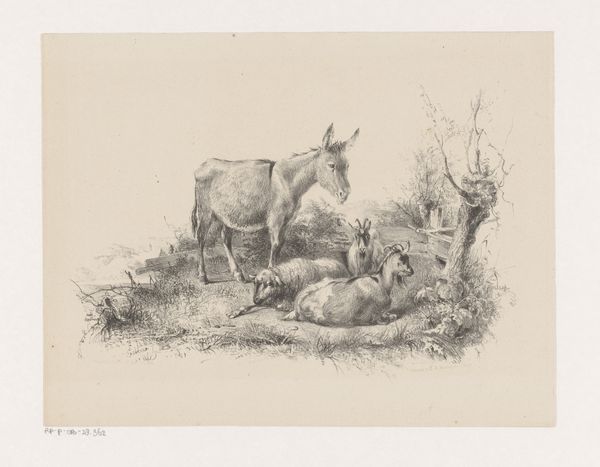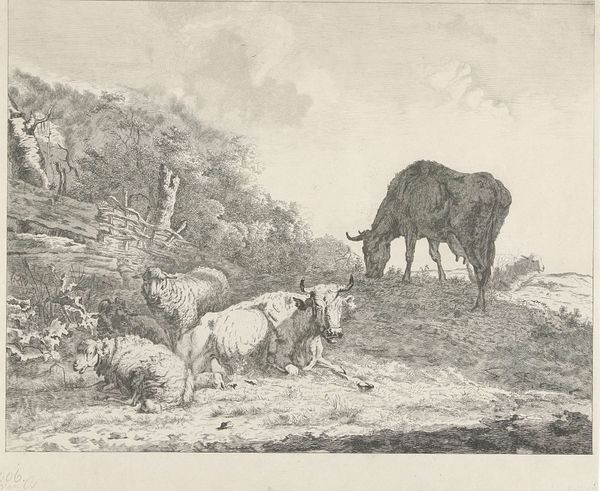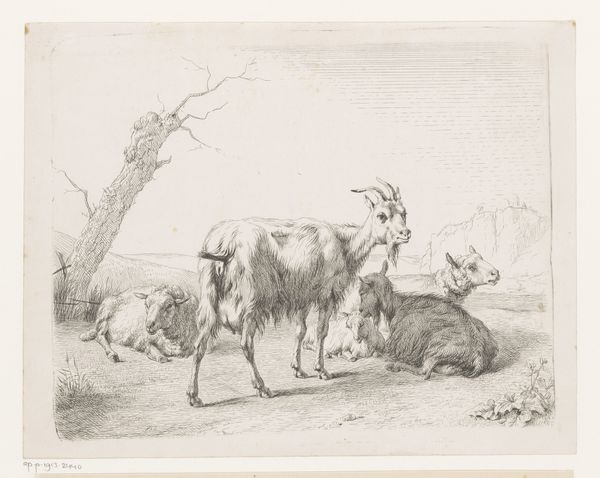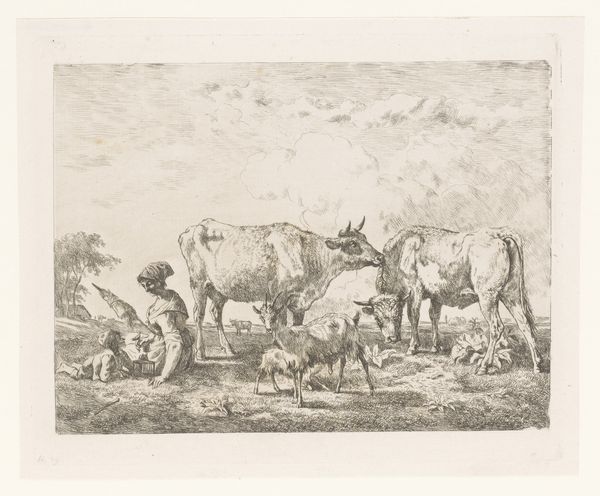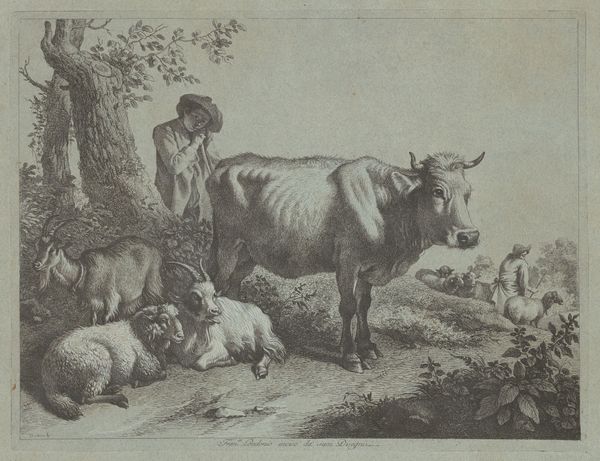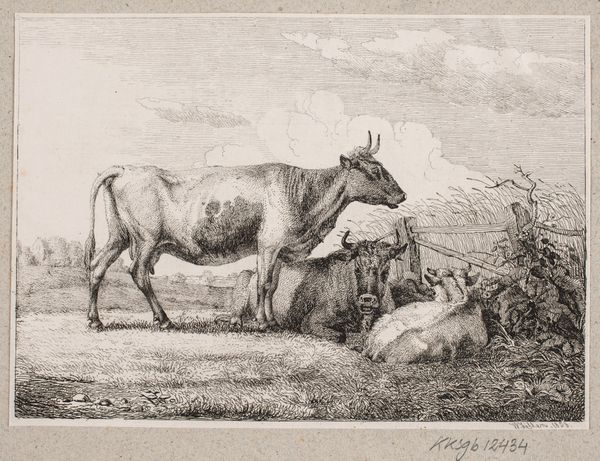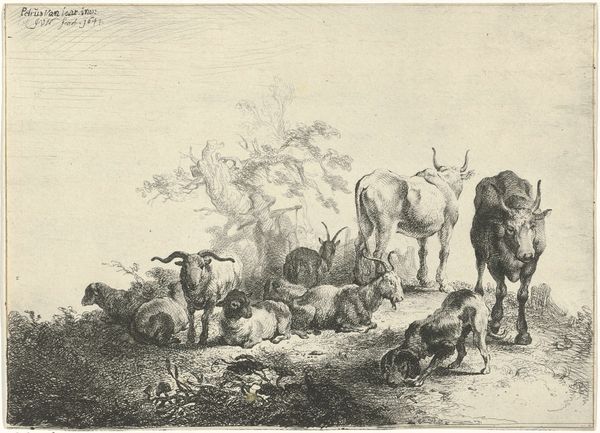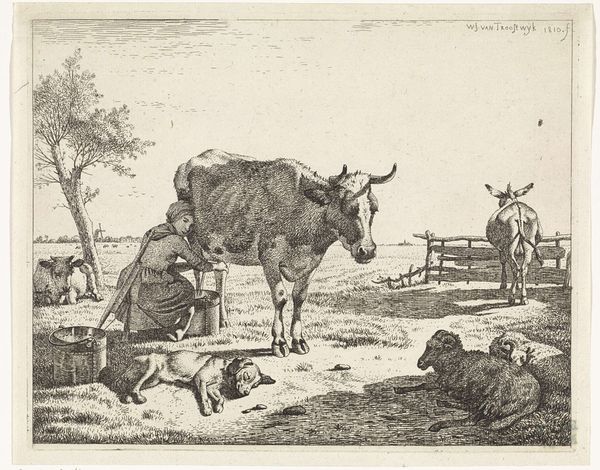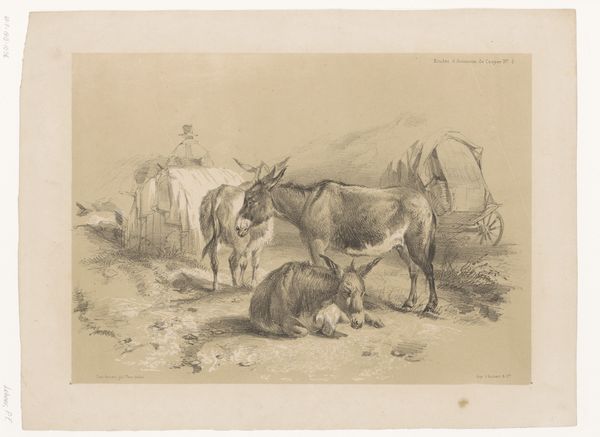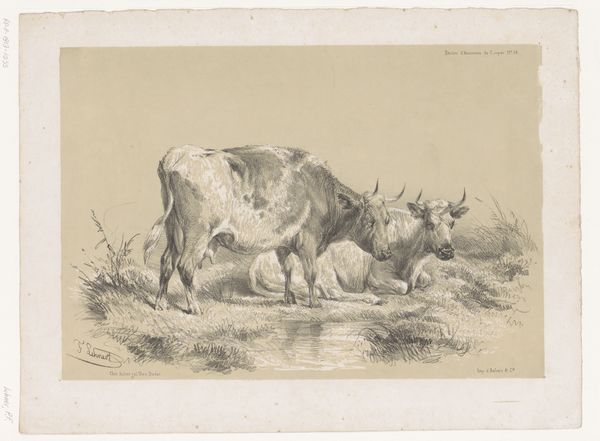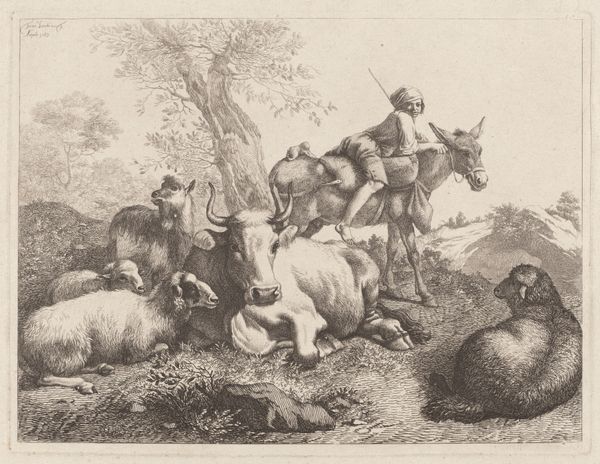
drawing, print, etching
#
drawing
# print
#
etching
#
landscape
#
pencil drawing
#
genre-painting
#
realism
Dimensions: Sheet: 12 13/16 in. × 19 in. (32.5 × 48.3 cm) Plate: 6 3/16 × 9 3/4 in. (15.8 × 24.8 cm)
Copyright: Public Domain
Editor: Charles Jacque’s "Dutch Cows", an etching from 1864 currently residing at the Met, it’s a fairly bucolic scene; the cows, the herder, it all looks rather idyllic, almost staged. How would you interpret this work? Curator: I see here an engagement with a burgeoning public fascination with rural life, specifically life removed from the industrial centers and political anxieties of mid-19th century Europe. This "realism," though beautifully rendered, catered to an urban audience often disconnected from the realities of agrarian existence, perhaps romanticizing labor in the face of social change. Note the relatively small figure of the herder compared to the cows, emphasizing the animals as subjects of interest. Editor: I see what you mean, almost like it's meant for city folk, not farmers. The cows do seem really prominent. Were these kinds of scenes popular? Curator: Landscapes with animals gained traction within Parisian salons precisely because they represented an ordered, comforting vision of rural France, during a time of intense modernization and political instability. Images like these affirmed particular socio-economic hierarchies and idealized notions of pastoral life. Consider also that reproductive prints like this were quite accessible, making these idyllic scenes available to a broader middle-class audience, influencing public perception of rural life. Why do you think that might be significant? Editor: Well, maybe that shaped what city people thought farming was actually like and that art reinforced or maybe even created stereotypes about rural people. Curator: Exactly. By visually prioritizing livestock and idealizing labor, the etching might distract from socio-political issues affecting rural communities. We have to be aware of the artistic intent and what purpose it fulfills within the historical narrative. Editor: That definitely reframes the whole piece for me, thank you. I will keep a critical eye for that interplay between imagery and social context.
Comments
No comments
Be the first to comment and join the conversation on the ultimate creative platform.
